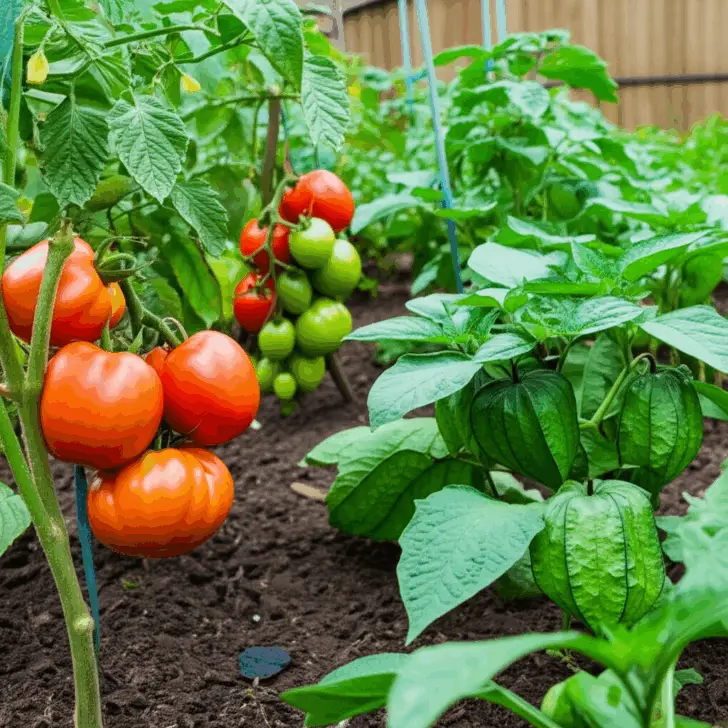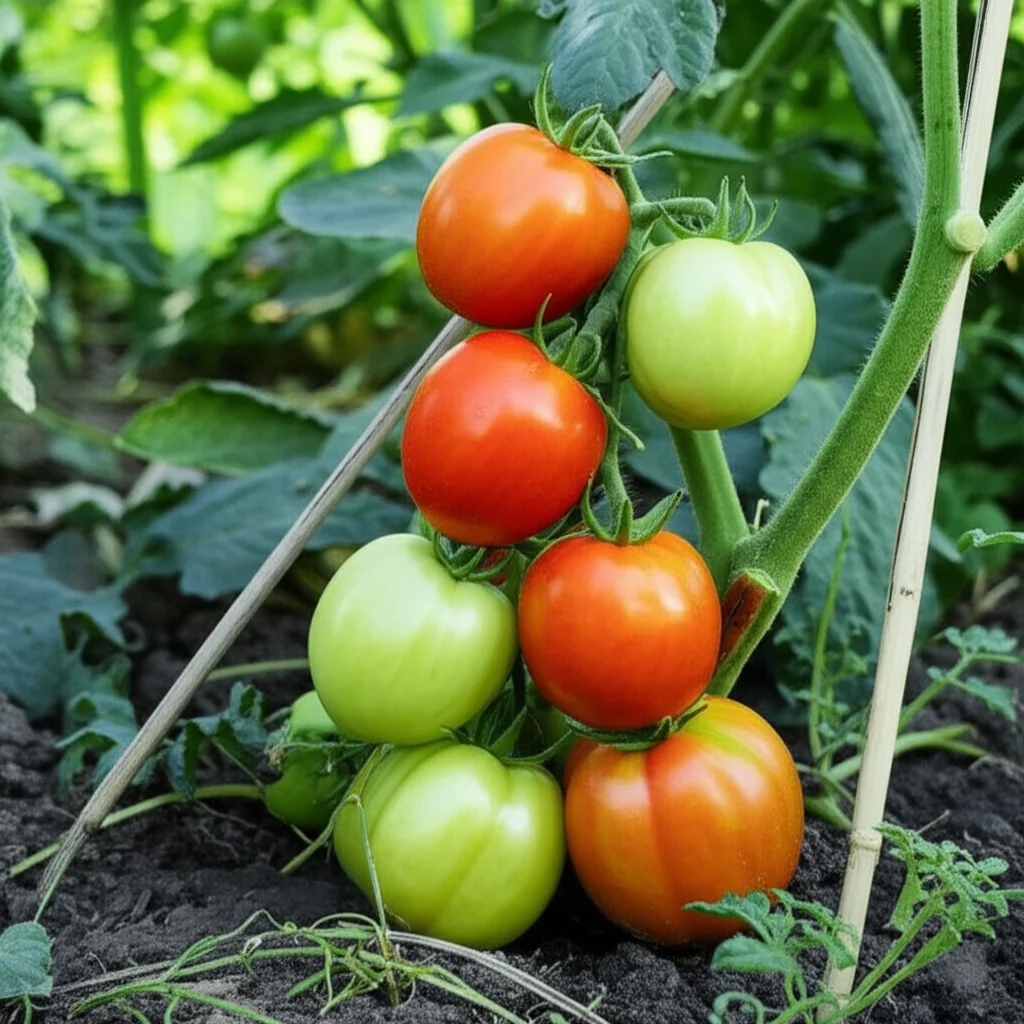Learn the secrets of successfully growing tomatoes and tomatillos together using companion planting techniques. This guide covers everything from ideal conditions and planting strategies to pest control and maximizing yields.

Companion planting offers numerous benefits for your garden. This guide explores the compatibility of tomatoes and tomatillos, providing practical advice on how to grow these delicious nightshades together for a thriving and productive harvest.
JUMP TO TOPIC
- 1 Understanding the Benefits of Companion Planting
- 2 Are Tomatoes and Tomatillos Compatible Companions?
- 3 Ideal Growing Conditions for Tomatoes and Tomatillos
- 4 Planting Tomatoes and Tomatillos Together
- 5 Pest and Disease Management for Companion Planting
- 6 Beneficial Companion Plants for Tomatoes and Tomatillos
- 7 Harvesting Tomatoes and Tomatillos
- 8 FAQs
- 9 Maximizing Your Harvest
- 10 Conclusion
Understanding the Benefits of Companion Planting
Companion planting involves strategically planting different species together to enhance growth, deter pests, attract beneficial insects, and improve soil health. Some plants naturally complement each other, while others can hinder growth. By understanding these relationships, you can create a thriving garden ecosystem. Benefits include:
Pest Control: Certain plants repel harmful insects, protecting your crops naturally.
Disease Prevention: Some companions can help prevent the spread of common plant diseases.
Improved Pollination: Attracting pollinators like bees and butterflies boosts fruit and vegetable production.
Enhanced Growth: Some plants improve soil conditions or provide shade, benefiting their neighbors.
Space Optimization: Vertical gardening and interplanting maximize space utilization.
Are Tomatoes and Tomatillos Compatible Companions?
Tomatoes and tomatillos, both members of the nightshade family (Solanaceae), share similar growing requirements, making them generally good companions. However, there are some considerations to keep in mind for optimal results. Their shared susceptibility to certain pests and diseases necessitates careful monitoring and preventative measures.
Ideal Growing Conditions for Tomatoes and Tomatillos
Both tomatoes and tomatillos thrive in warm, sunny conditions with well-drained soil rich in organic matter.
Sunlight: 6-8 hours of direct sunlight daily.
Soil: pH between 6.0 and 7.0. Amend with compost or aged manure.
Water: Consistent watering, especially during dry periods. Avoid overhead watering to prevent fungal diseases.
Temperature: Optimal growth between 70-85°F (21-29°C).
Planting Tomatoes and Tomatillos Together
Spacing: Provide adequate space for both plants to grow, typically 2-3 feet apart for tomatoes and 3-4 feet for tomatillos, which can spread significantly.
Arrangement: Plant taller tomato varieties behind shorter tomatillos to ensure both receive sufficient sunlight. Consider trellising or staking both plants for support.
Timing: Start seeds indoors 6-8 weeks before the last expected frost. Transplant seedlings outdoors after the danger of frost has passed and soil temperatures have warmed up.
Pest and Disease Management for Companion Planting
Common Pests: Aphids, whiteflies, tomato hornworms, and spider mites can affect both tomatoes and tomatillos. Implement preventative measures like introducing beneficial insects (ladybugs, lacewings) and using insecticidal soap or neem oil.
Common Diseases: Blight, fungal infections, and wilts can plague both plants. Ensure good air circulation, avoid overhead watering, and rotate crops annually to minimize disease risk.
Beneficial Companion Plants for Tomatoes and Tomatillos
Basil: Repels insects and improves tomato flavor.
Marigolds: Deter nematodes and other soil pests.
Nasturtiums: Attract beneficial insects and act as a trap crop for aphids.
Onions and Garlic: Repel many pests and help prevent fungal diseases.
Parsley: Attracts beneficial insects like hoverflies and parasitic wasps.
Harvesting Tomatoes and Tomatillos
Tomatoes: Harvest when fruits are fully colored and slightly soft to the touch.
* Tomatillos: Harvest when the husks turn papery and the fruit fills the husk completely.
FAQs
Q: Can I grow tomatoes and tomatillos in the same pot?
A: While possible, it’s generally recommended to grow them in separate containers or in the ground to provide adequate space for their root systems.
Q: What are the signs of overwatering tomatoes and tomatillos?
A: Yellowing leaves, wilting, and stunted growth can indicate overwatering. Ensure proper drainage and avoid watering too frequently.
Q: How can I prevent blossom-end rot in tomatoes?
A: Consistent watering and ensuring adequate calcium levels in the soil can help prevent blossom-end rot.
Maximizing Your Harvest
Intercropping with fast-growing leafy greens like lettuce or spinach can maximize space utilization and provide an early harvest before the tomatoes and tomatillos need the full space.
Consider succession planting for continuous harvests throughout the growing season.
Conclusion
Growing tomatoes and tomatillos together can be a rewarding experience, offering a bountiful harvest of these delicious nightshades. By understanding their growing requirements, implementing companion planting strategies, and practicing proper pest and disease management, you can create a thriving garden ecosystem and enjoy fresh, homegrown produce all season long. Remember to monitor your plants regularly and address any issues promptly for the best results. Happy gardening!

